Let me tell you the beautiful story of the formation of the Maldives 26 Atolls and 1200 Islands in a step-by-step illustration series.
From volcanoes to perfect tropical islands, here is the fabulous story of the Island Kingdom.
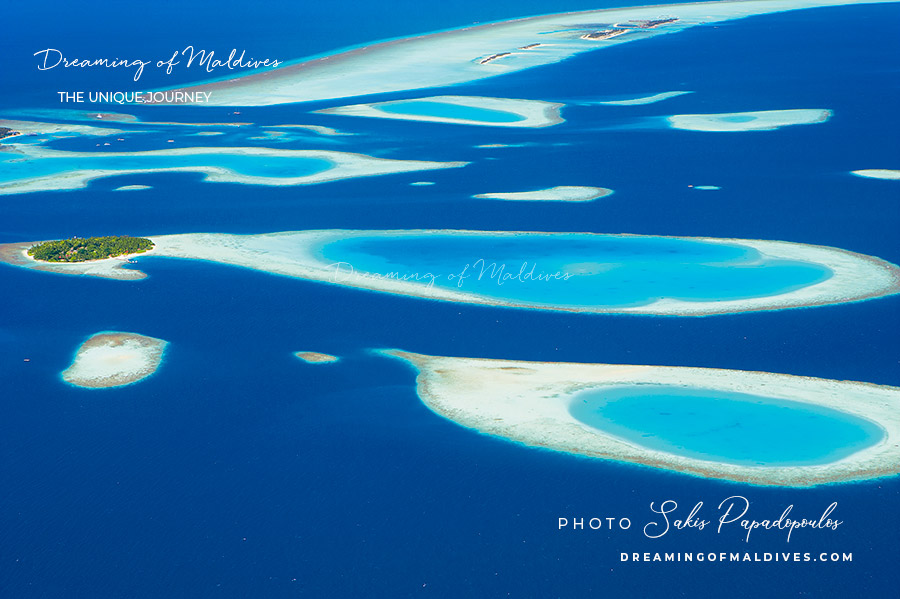
The Island Nation is the wonderful result of a millions of years of nature evolution. From erupting volcanoes to colonies of corals to breathtaking Atolls and tiny tropical Islands, here is the long and magnificent process of the birth of the Maldives Islands.
The Maldives Islands
are a fragile and precious Ecosystem.
Please Handle them with care
The formation of Atolls is a long process. Like all geological formation, their creation is sometimes violent and often complicated.
In order to better understand the complexity of this process, I thought about creating a series of illustrations to show you how fragile and precious the Maldives are.
How atolls are formed in Maldives ?
The Maldives Atolls are formed from coral reefs developing around the top of sunken volcanoes.
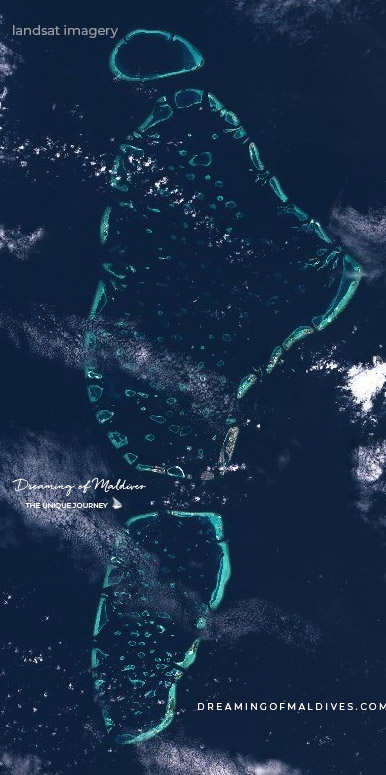
What is an Atoll ?
When an island completely subsides beneath the water leaving a ring of growing coral with an open lagoon in its center, it is called an atoll.
Darwin theory about the formation of coral reefs and atolls.
Darwin was the first to believe that corals need to grow in shallow, well-lit waters and even as the sea floor was falling below them, the reefs were able to keep up and stay in shallow water by building their own limestone foundation made of coral skeleton.
Studies conducted in the 1960’s have shown that Darwin theory was right.
DISCOVER MALDIVES EXTRAORDINARY TALES

A Step-by-Step visual Story of Maldives Atolls and Island formation
1. Around 60 million years ago, the Maldives were not yet existing. The region was a chain of active volcanoes. Earth was bubbling with eruptions.
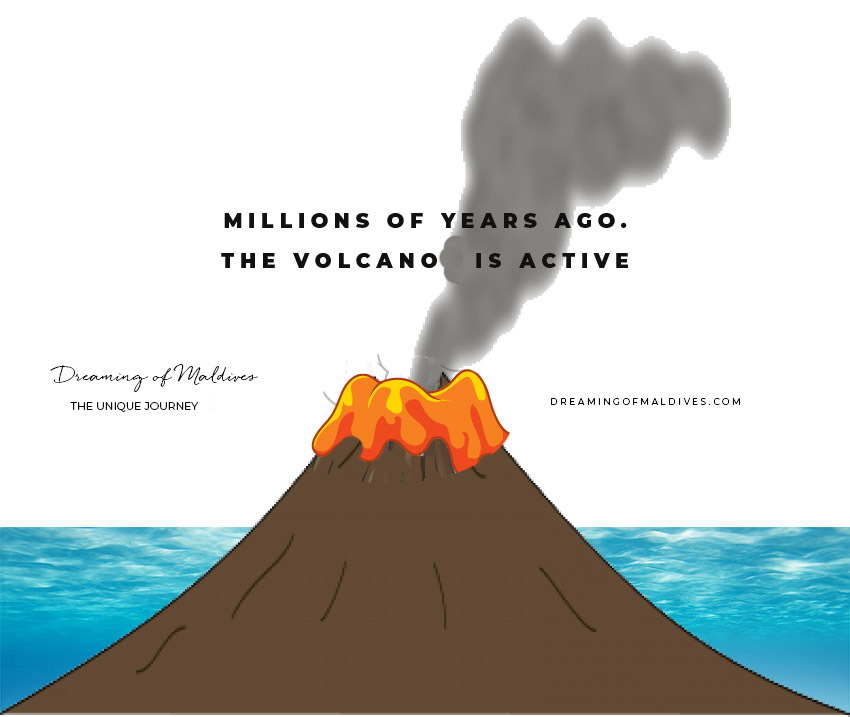
2. Like all volcanoes, eruptions stopped and volcanoes slowly died, letting only a chain of mountains emerging from the sea.
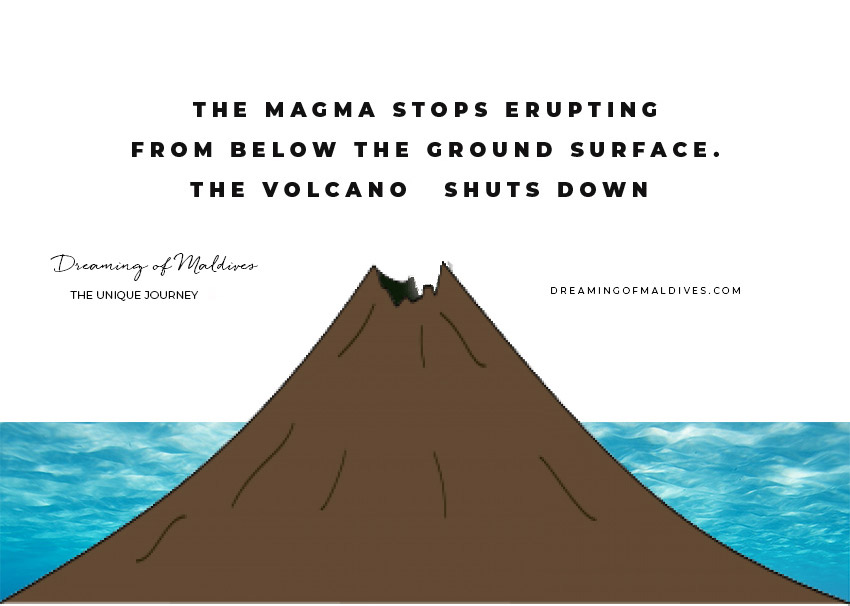
3. As the sea rose, the volcano started to sink underwater. Erosion gradually wears the rock into sand, while the volcano shrinks and sinks.
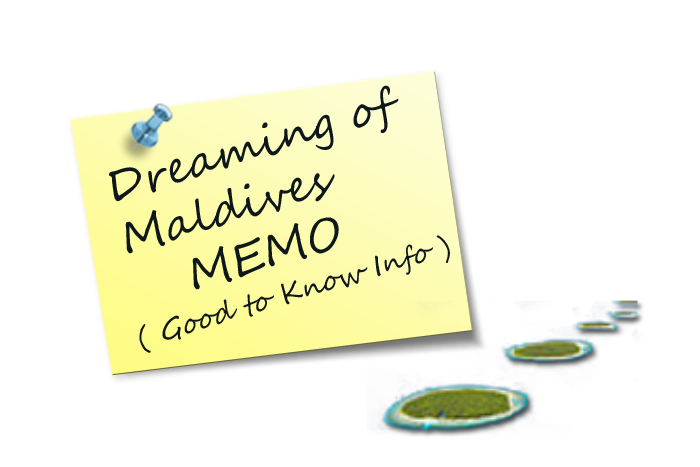
The majority of reef building corals are found within tropical and subtropical warm waters.
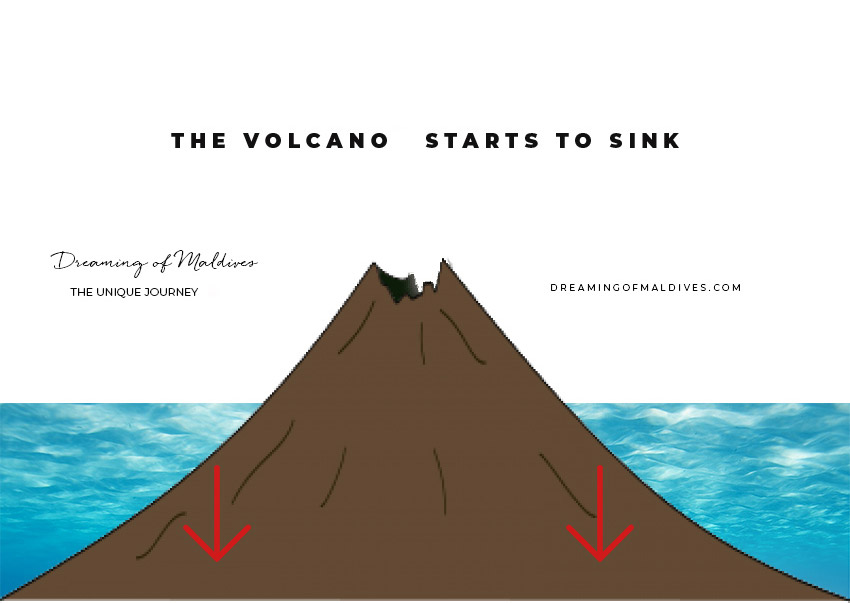
4. Life strives. The sea is warm. Living coral colonies surrounds the volcano and a fringing coral reef slowly appears. Erosion continues and The volcano keep on sinking.
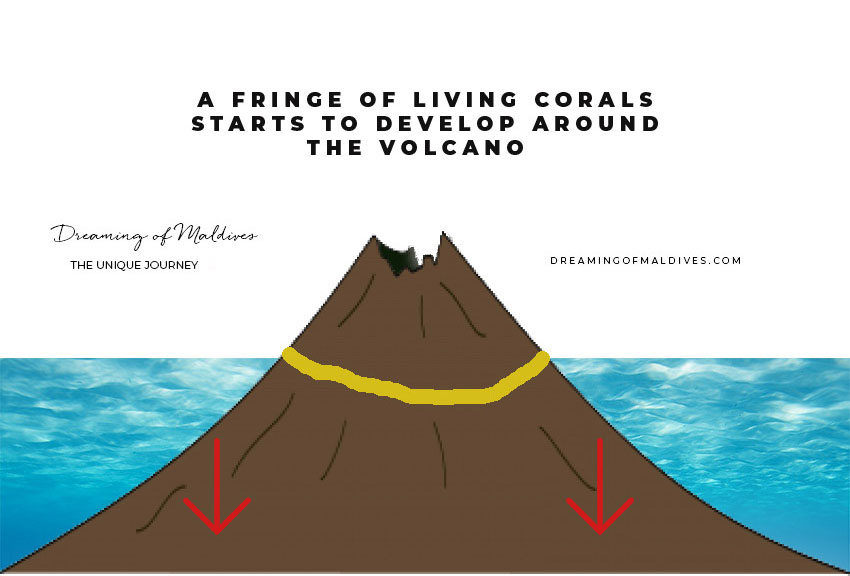

How long does it take for a fringing reef to form ?
It can take as long as 10,000 years for a fringing reef to form. Over the next 100,000 years, if conditions are favorable, the reef will continue to expand.
5. The Living coral colonies surrounds the volcano and a fringing coral reef slowly appears. As the reef expands, the interior island usually begins to subside and the fringing reef slowly turns into a barrier reef.
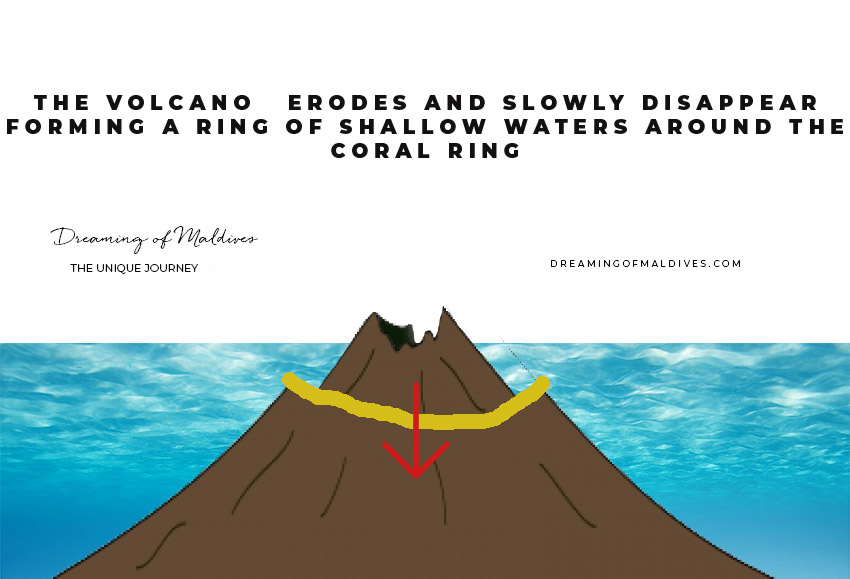

What is the difference between the Atolls of French Polynesia and Maldives ?
Some volcanoes do not entirely sink, like in French Polynesia where most of the mountain tops are still visible. In Maldives, all mountain tops are now underwater and eroded. This is why the geography between Polynesia and Maldives is so different.
Focus : The difference between the different types of Atolls
This satellite view of Maupiti Atoll, in French Polynesia, is the perfect example of an atoll where the volcano top still arises.
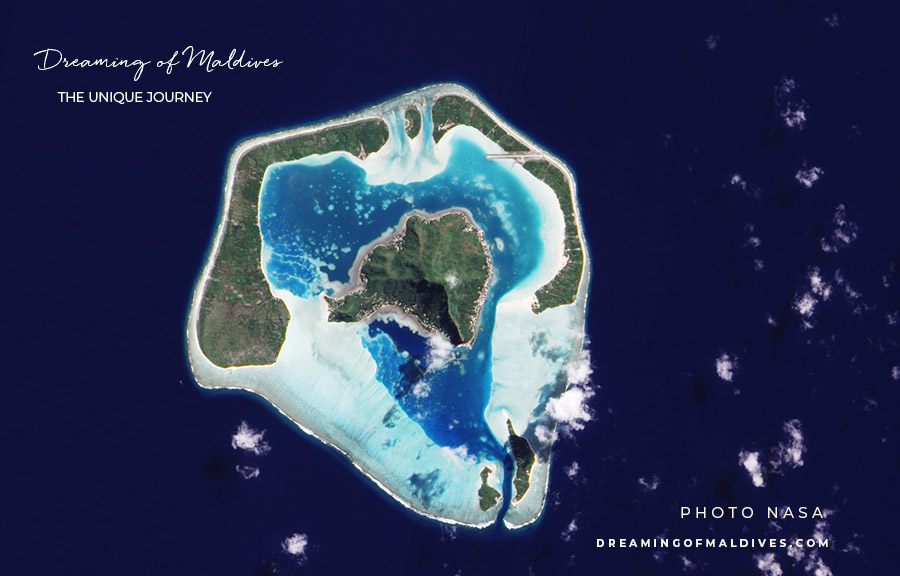
VS
Gan Atoll, in south Maldives. The Atoll lagoon has no mountainous environment.
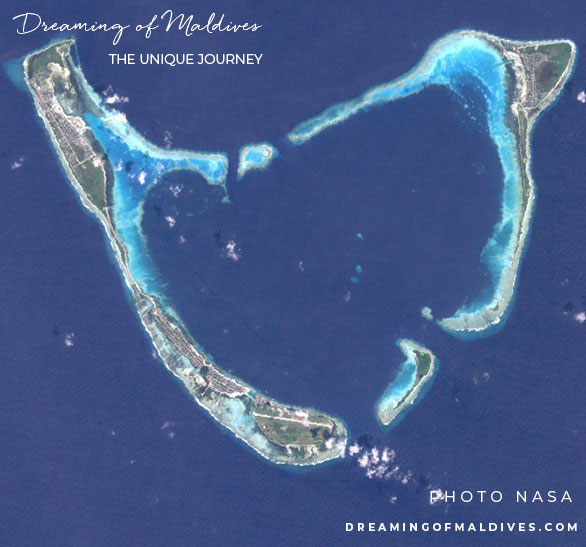
6. The coral colony expands. The volcano continues to sink. A coral ring appears.
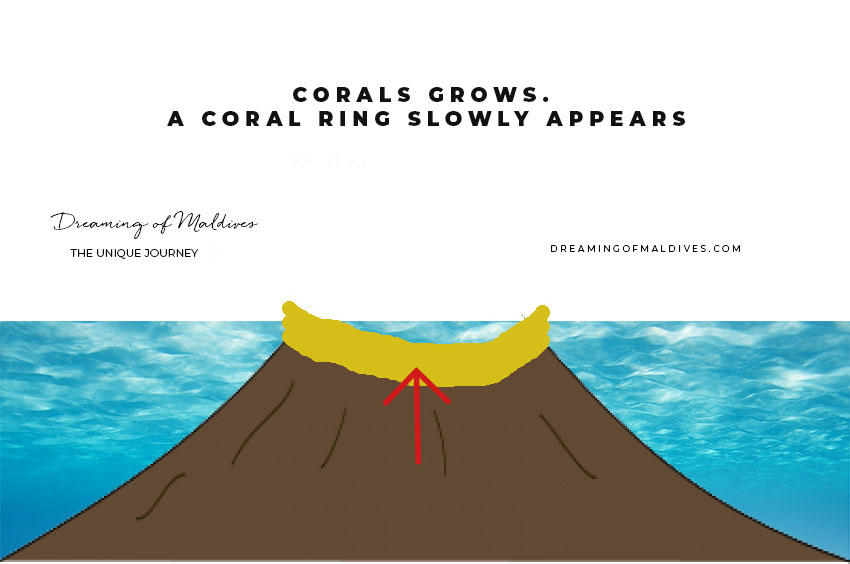

How long does it take for an Atoll to form ?
The process of atoll formation may take as long as 30,000,000 years to occur.
7. Corals expand and continue growing above sea level. The first Maldives Atoll Ring is born.
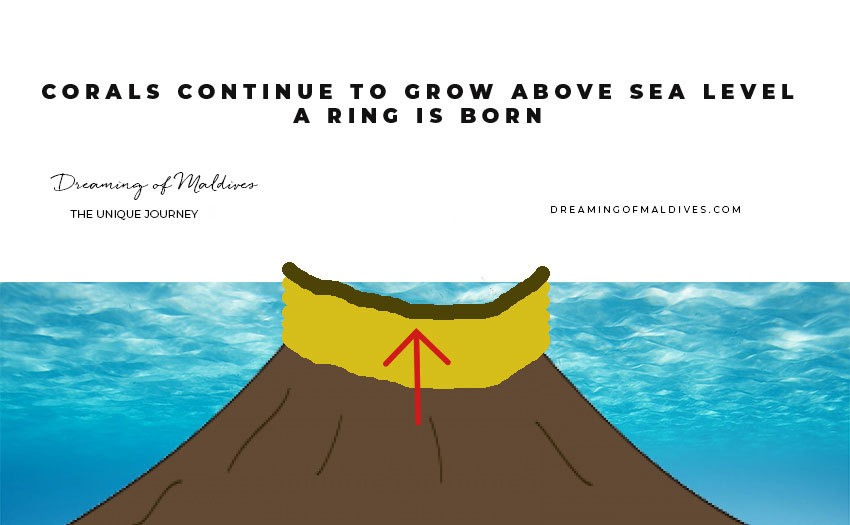
8. Coral live and die, they are living organisms. Debris and sediments accumulate around the ring with sea currents.
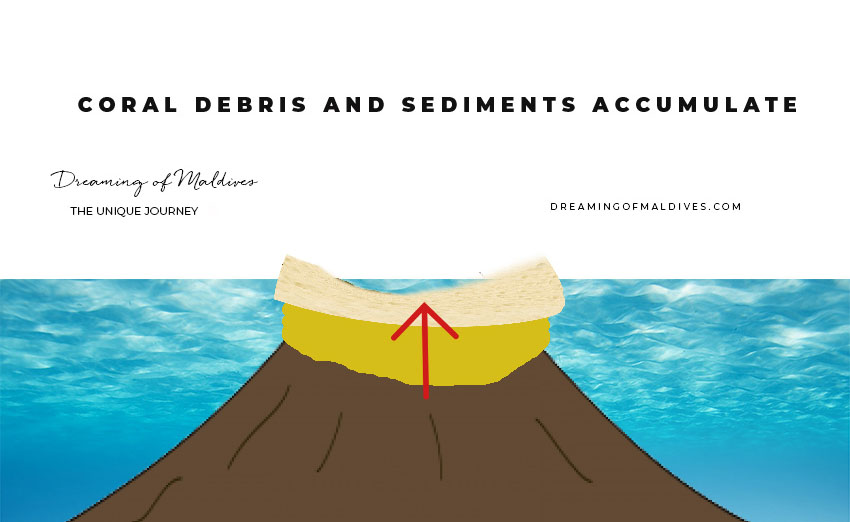
This is still happening in reality in Maldives. This beautiful process occurs daily on many sandbanks.
I took this photo in Noonu Atoll.
The sandbank was full of pieces of corals and shells.
Photo of coral debris accumulating on a forming sandbank in Maldives.
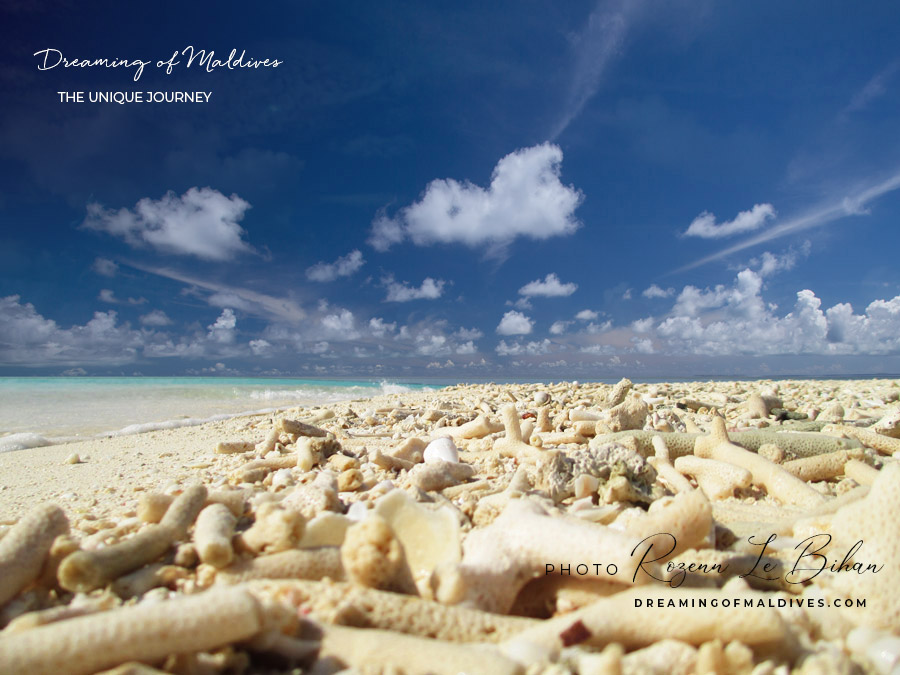
9. The new island is formed but there is still no vegetation. Until one day… a drifting coconut passes by and eventually gets stuck on its shores. Some reefs will have vegetation and some others not, until another coconut passes by.
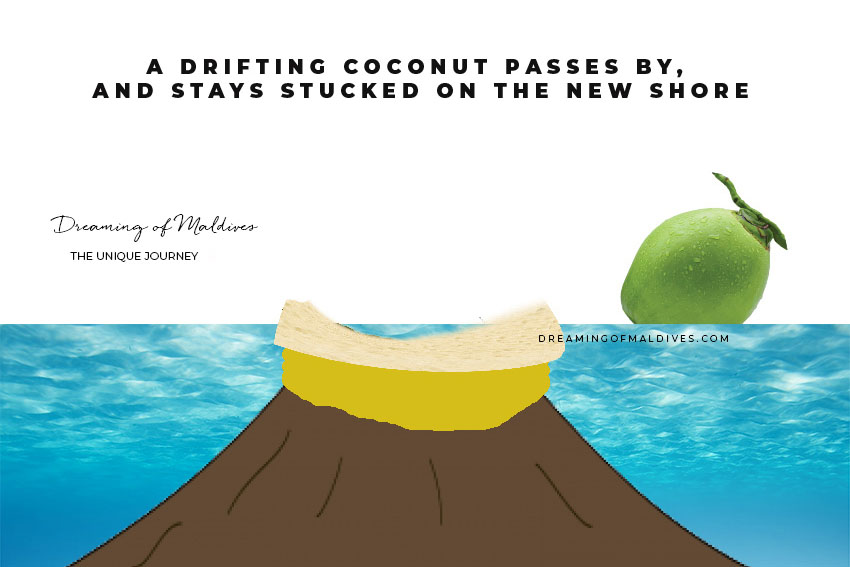

How Coconut Trees grow ?
Coconut trees do not need much to grow and actually thrive in sandy soil that provide them with the food and minerals they need. They are also very tolerant to salty water.
10. Coconut Trees start to grow on the newly created coral beach.
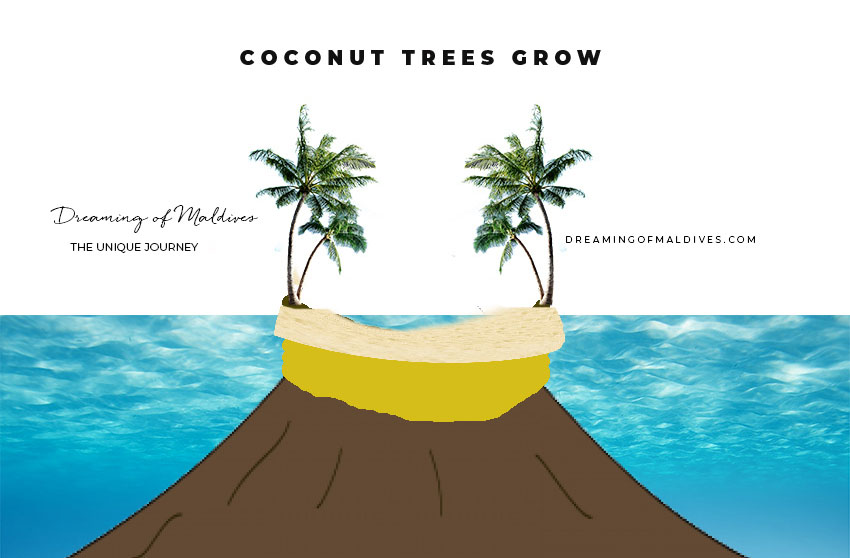
On the below aerial photo, we can see some sandbanks formed without vegetation. The outside reef falling into to the ocean depths is clearly seen.
Aerial photo of an outer Atoll ridge at the extreme North of Maldives.
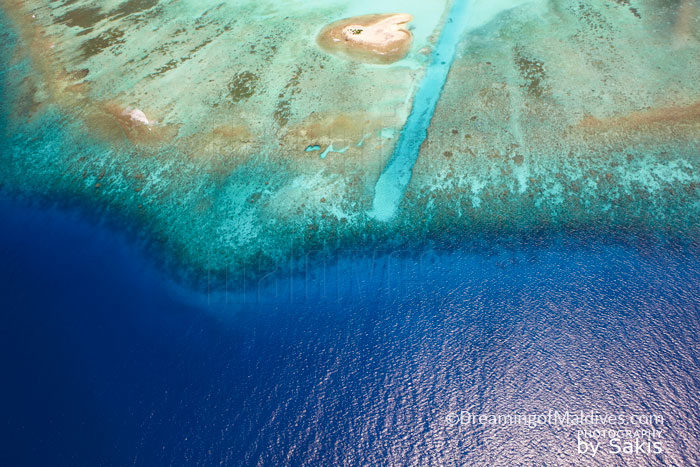
11. The same process repeats itself everywhere around the sunken volcano chain. Several islands and land masses form the first Maldives Atolls. A lagoon is also formed at the center of each atoll.
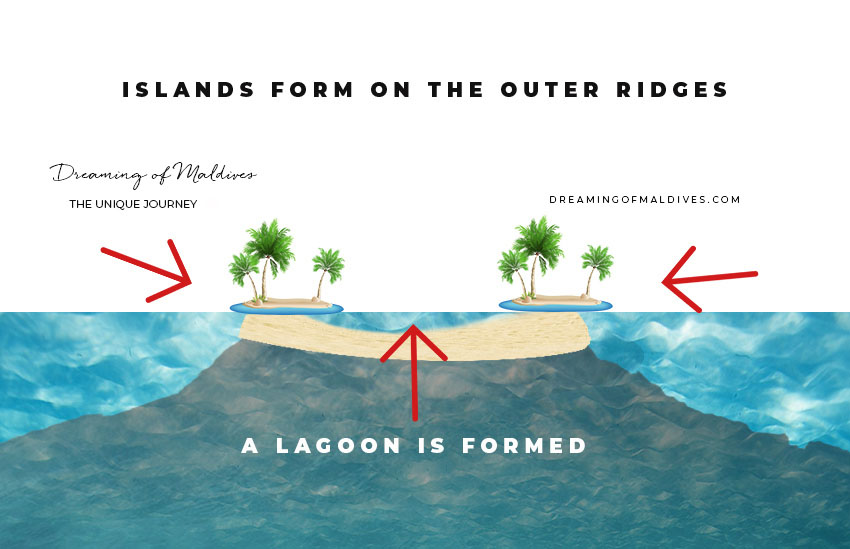

How deep are the Maldives Atolls ?
In this part of the Indian Ocean (Maldives are located on the Chagos-Laccadive Ridge), the Atoll outside ridges can go to 3000 meters depth.
Within the atolls depths vary from 10 to 100 meters.
The most common being around 30 to 5o meters for most of the country.
Map of Indian Ocean depth
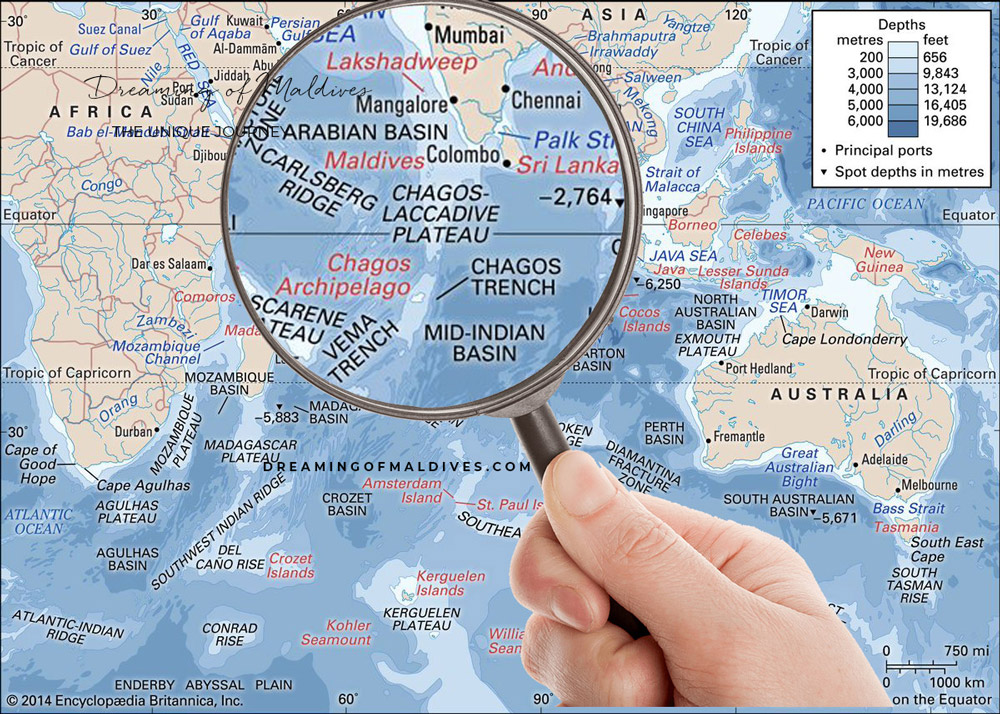
11. Meanwhile, life thrives around and inside the atoll. Corals are home to millions of fishes.
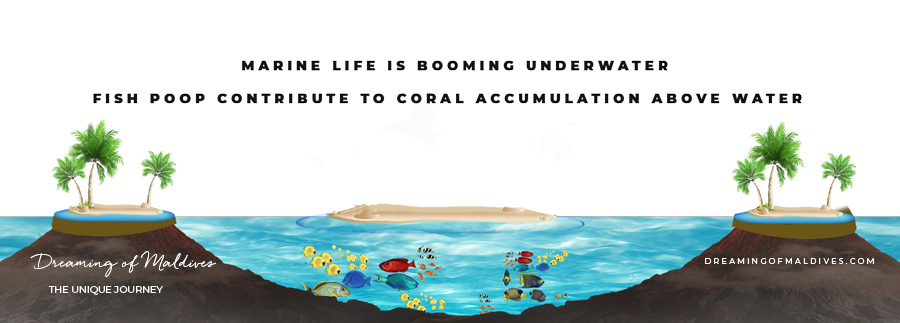

Did you know that Maldives sandy beaches are also made from fish poop ?
The Parrot Fish loves dead coral and feeds from it. His poop contribute to make the fine sandy beaches of Maldives.
12. With currents, Coral debris and sediments continue accumulating inside the atoll.
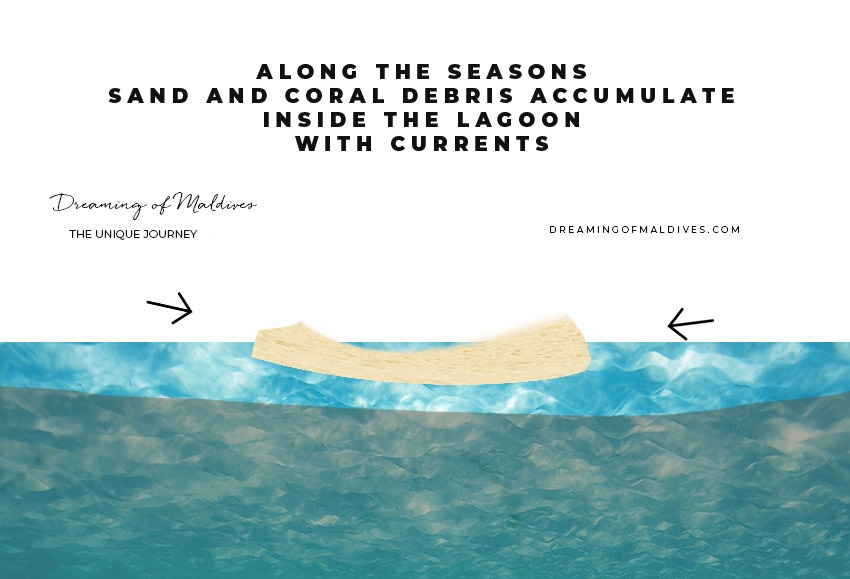
13.a More sandbanks and land masses appear
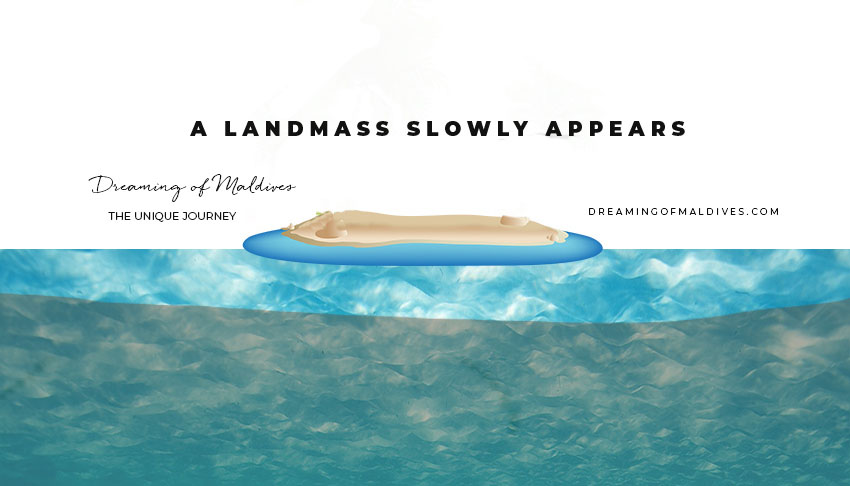
13.b. A drifting coconut…you know the story…
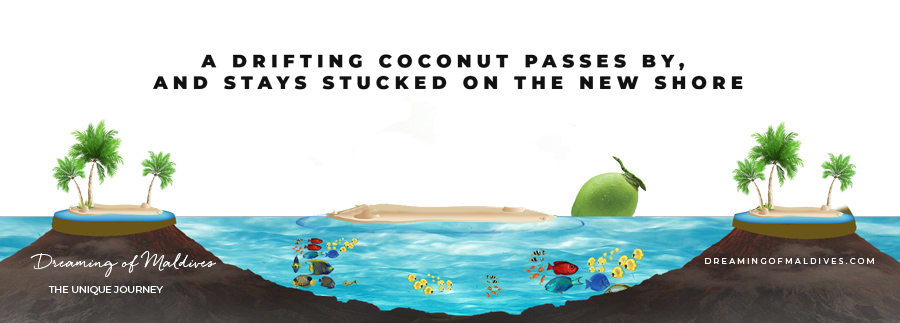
14. Inside the atoll lagoon, tropical islands take shape.
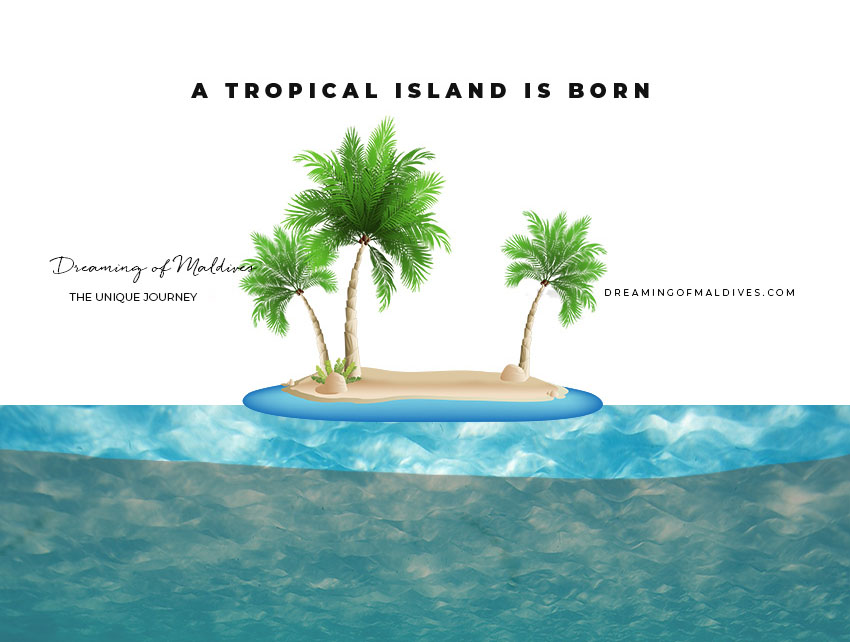
Voilà. The perfect Maldives Tropical Island is born !
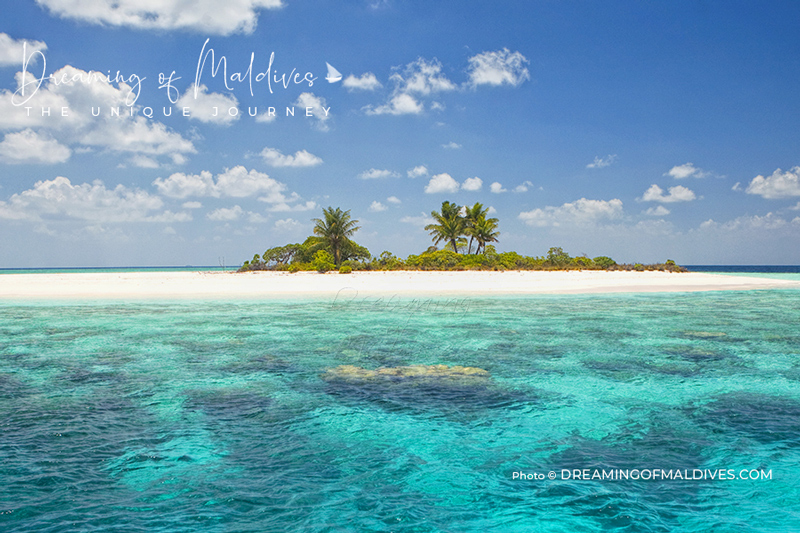
See also
15. The Atoll becomes the Maldives we know today. And the process continues…
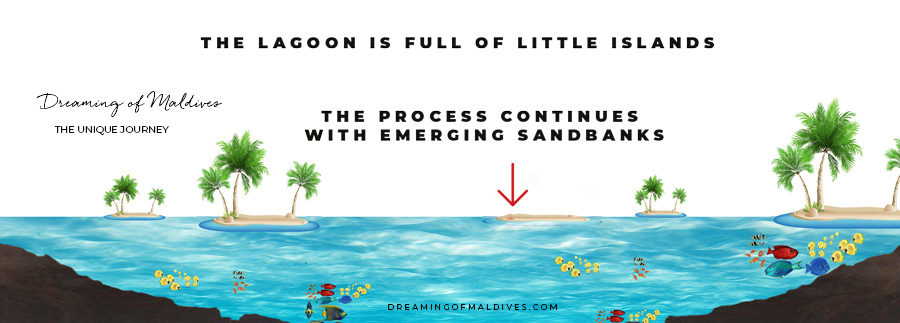

The End.
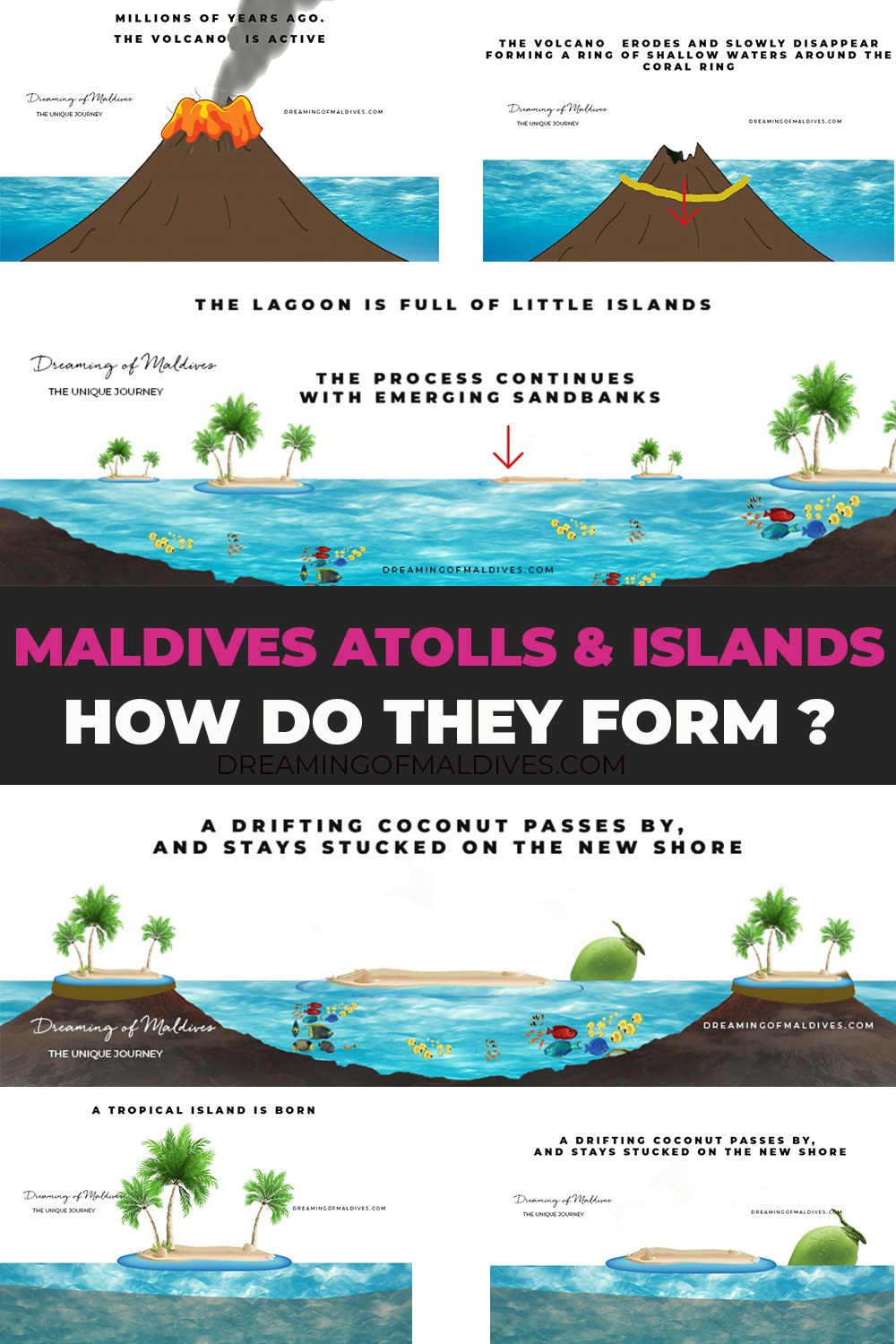
Pin The Dream
Fascinating Maldives…
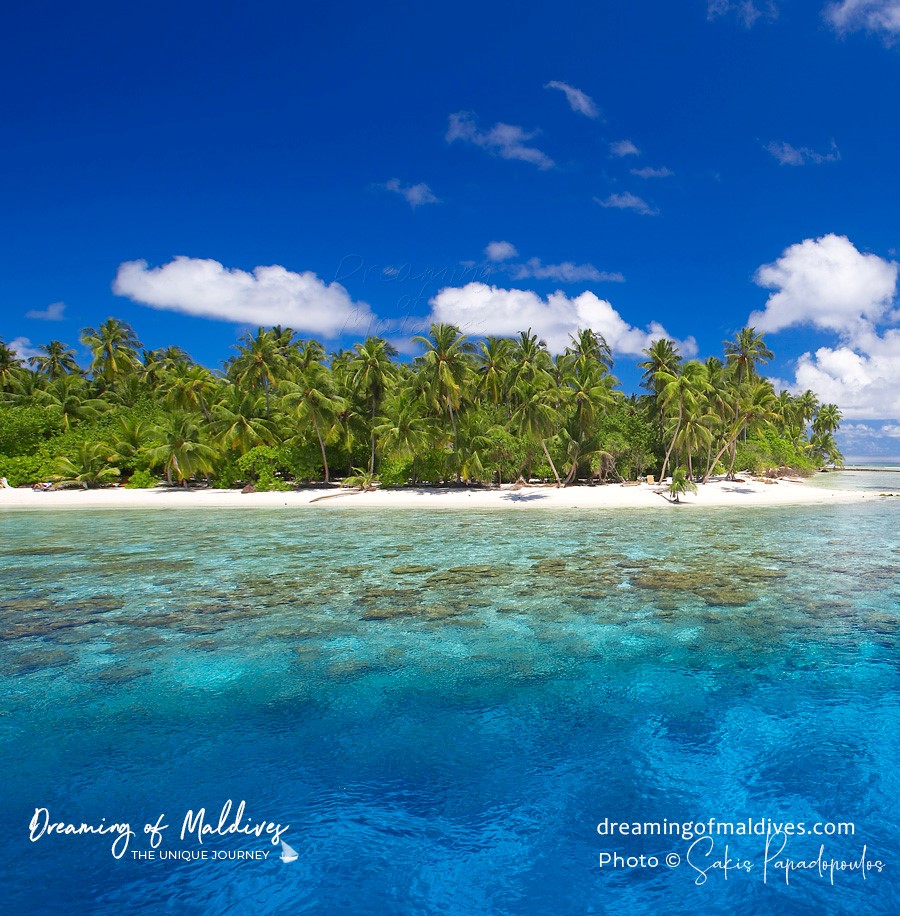
To write this article I helped myself on the following scientific resources :
How Do Coral Reefs form. NOAA
Darwin Coral Studies and Theory
Follow us on Facebook, Youtube and Instagram
for more Maldives Dreams & Stories
Your TOP Best Maldives Resorts 2026
YOUR CHOICE. YOUR DREAM. YOUR VOICE
[ Official ]
Traveler's Choice
15th Edition
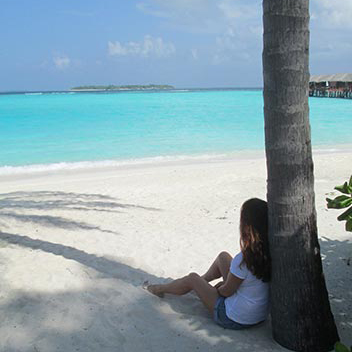



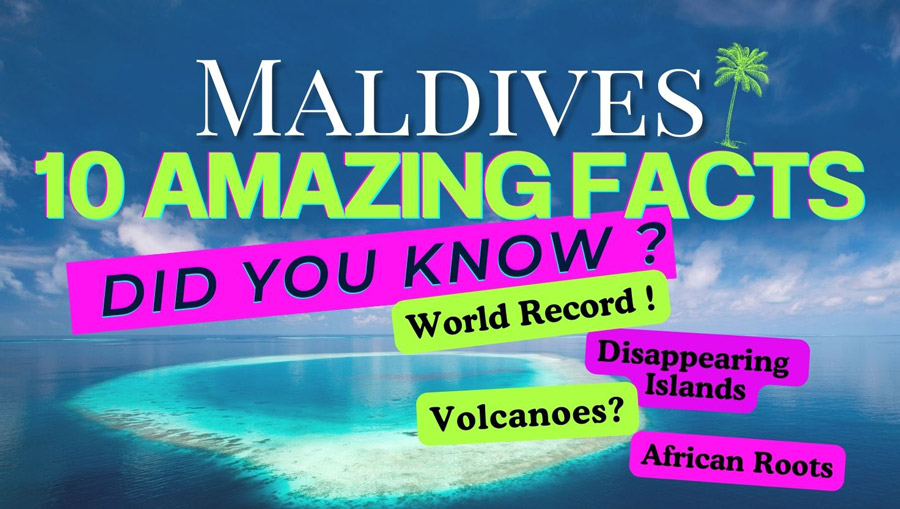











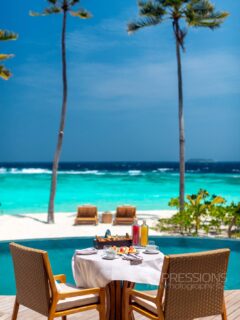

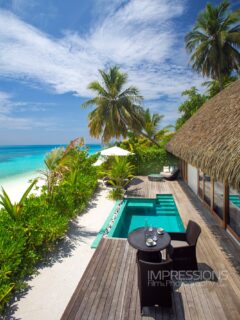

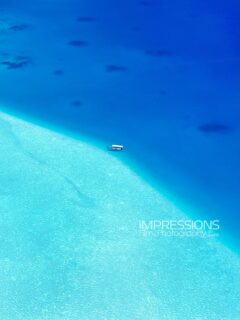





1 comment
Good article, learn a lot.